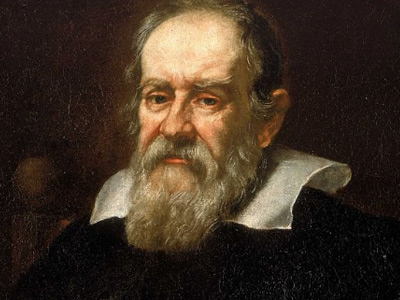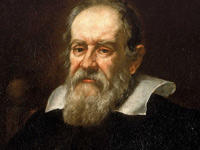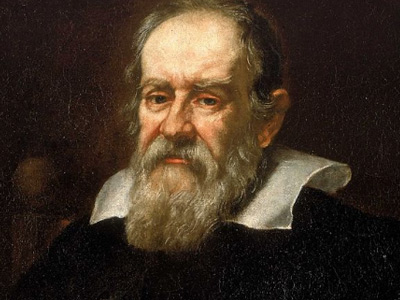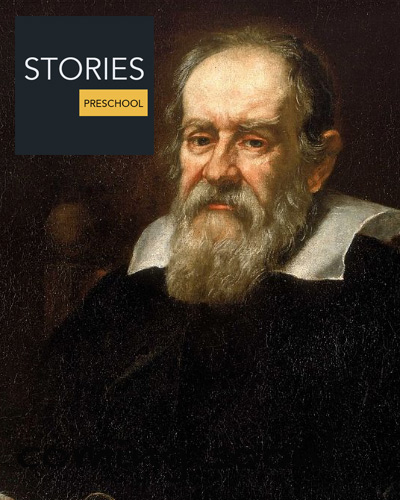Galileo Galilei (1564-1642)

Galileo Galilei (15 February 1564 – 8 January 1642) was an Italian polymath. Galileo is a central figure in the transition from natural philosophy to modern science and in the transformation of the scientific Renaissance into a scientific revolution.
Galileo's championing of heliocentrism and Copernicanism was controversial during his lifetime, when most subscribed to either geocentrism or the Tychonic system. He met with opposition from astronomers, who doubted heliocentrism because of the absence of an observed stellar parallax. The matter was investigated by the Roman Inquisition in 1615, which concluded that heliocentrism was "foolish and absurd in philosophy, and formally heretical since it explicitly contradicts in many places the sense of Holy Scripture." Galileo later defended his views in Dialogue Concerning the Two Chief World Systems (1632), which appeared to attack Pope Urban VIII and thus alienated him and the Jesuits, who had both supported Galileo up until this point. He was tried by the Inquisition, found "vehemently suspect of heresy", and forced to recant. He spent the rest of his life under house arrest. While under house arrest, he wrote one of his best-known works, Two New Sciences, in which he summarized work he had done some forty years earlier on the two sciences now called kinematics and strength of materials.
Galileo studied speed and velocity, gravity and free fall, the principle of relativity, inertia, projectile motion and also worked in applied science and technology, describing the properties of pendulums and "hydrostatic balances", inventing the thermoscope and various military compasses, and using the telescope for scientific observations of celestial objects. His contributions to observational astronomy include the telescopic confirmation of the phases of Venus, the discovery of the four largest satellites of Jupiter, the observation of Saturn's rings (though he could not see them well enough to discern their true nature) and the analysis of sunspots.
Known for his work as astronomer, physicist, engineer, philosopher, and mathematician, Galileo has been called the "father of observational astronomy", the "father of modern physics", the "father of the scientific method", and even the "father of science".
Early life and family
Galileo was born in Pisa (then part of the Duchy of Florence), Italy, on 15 February 1564, the first of six children of Vincenzo Galilei, a famous lutenist, composer, and music theorist, and Giulia (née Ammannati), who had married in 1562. Galileo became an accomplished lutenist himself and would have learned early from his father a scepticism for established authority, the value of well-measured or quantified experimentation, an appreciation for a periodic or musical measure of time or rhythm, as well as the results expected from a combination of mathematics and experiment.
Three of Galileo's five siblings survived infancy. The youngest, Michelangelo (or Michelagnolo), also became a noted lutenist and composer although he contributed to financial burdens during Galileo's young adulthood. Michelangelo was unable to contribute his fair share of their father's promised dowries to their brothers-in-law, who would later attempt to seek legal remedies for payments due. Michelangelo would also occasionally have to borrow funds from Galileo to support his musical endeavours and excursions. These financial burdens may have contributed to Galileo's early desire to develop inventions that would bring him additional income.
When Galileo Galilei was eight, his family moved to Florence, but he was left with Jacopo Borghini for two years. He was educated from 1575 to 1578 in the Vallombrosa Abbey, about 30 km southeast of Florence.
Death
Galileo continued to receive visitors until 1642, when, after suffering fever and heart palpitations, he died on 8 January 1642, aged 77. The Grand Duke of Tuscany, Ferdinando II, wished to bury him in the main body of the Basilica of Santa Croce, next to the tombs of his father and other ancestors, and to erect a marble mausoleum in his honour.
These plans were dropped, however, after Pope Urban VIII and his nephew, Cardinal Francesco Barberini, protested, because Galileo had been condemned by the Catholic Church for "vehement suspicion of heresy". He was instead buried in a small room next to the novices' chapel at the end of a corridor from the southern transept of the basilica to the sacristy. He was reburied in the main body of the basilica in 1737 after a monument had been erected there in his honour; during this move, three fingers and a tooth were removed from his remains. One of these fingers, the middle finger from Galileo's right hand, is currently on exhibition at the Museo Galileo in Florence, Italy.
HISTORY

RESOURCES
This article uses material from the Wikipedia article "Galileo Galilei (1564-1642)", which is released under the Creative Commons Attribution-Share-Alike License 3.0.
© Stories Preschool. All Rights Reserved.









